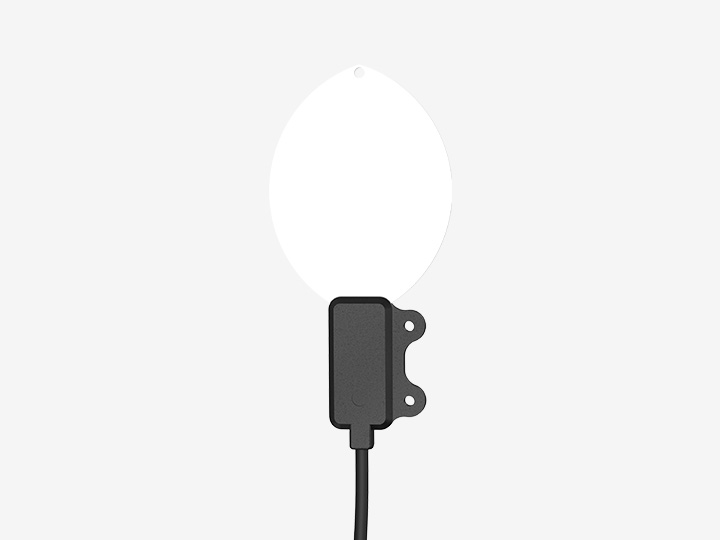Leaf wetness sensor data improve cherry production

In July of 2013, Lav Khot, professor of Biological Systems Engineering at Washington State University, and his team were in the field looking at how cherries were picked, weighed, and transported, when suddenly a helicopter began circling around a nearby orchard block.
When Dr. Khot asked the grower about it he said, “There was a rain last night, and we are trying to dry the tree canopies.” The grower told Khot that cherries are susceptible to cracking if moisture stays on the fruit too long, so they hire helicopters to fly over their orchards to remove water from the fruit and leaves, hoping to prevent fruit loss.
Data-Driven Decisions
Fresh market cherries are a lucrative business. That’s how the growers can afford the approximately $25K it costs to rent the helicopters every season. They try to do everything that they can to stop any cracking or splitting, but interestingly, Dr. Khot says grower decisions are influenced completely by emotion. “If there is a rain event, the farmer will become anxious, and they will hire pilots to fly the helicopter.”
Dr. Khot wondered if he could help the cherry growers make their decisions based on real data instead. He and his postdoc, Dr. Jianfeng Zhou, are using PHYTOS 31 leaf wetness sensors to determine if and how long water is present on the tree canopies after a rain event. Dr. Khot hopes that the data from these sensors will help growers decide whether or not it makes sense to fly the helicopter.
Why do cherries split?
Not all varieties of cherry crack, but high sugar content varieties do as the skin is thin during maturation. There are two hypotheses associated with fruit splitting or cracking:

Researching the effectiveness of helicopter drying
There are two approaches to drying canopies. One uses a sprayer that produces a cross-wind that moves sideways through the canopies, while the other uses the downwash from helicopter blades. Dr. Khot and his research assistant have experimented with crosswind velocities to see how much wind was being generated and how much water was really being dispersed. Dr. Khot commented, “We went out to the WSU orchard and ran the sprayer at two settings in order to see how water was removed and how much wind was coming through the canopies for a given amount of time.” They had good success at both removing the water from the trees and measuring it with the leaf wetness sensors. But, they started the measurements after the cherries had matured, so weren’t able to tie it to cracking.
One issue with using helicopters is that they are extremely dangerous. Accidents are not uncommon, and unfortunately, pilots have died. The team will also evaluate the efficacy of a mid-size, unmanned helicopter in order to test if it can produce enough downwash to dry the cherries and compare it with manned helicopters. Dr. Khot says, “The helicopters are large and difficult to fly close to the canopies, but we can program the unmanned drone to fly close to the canopy and get rid of the water safely.” Digital Harvest and Yamaha, who are supporting this aspect of the research, have received an exemption from the FAA so they can test their unmanned helicopter.


Differing tree architectures
Dr. Khot’s team did their first experiments on traditional cherry tree architectures (imagine a typical tree), but this year they will perform their experiments on trees that are trained into a “Y” shape, or completely vertical. Researchers have developed these new architectures for ease of harvesting and management, but Dr. Zhou says that there will be less canopy variability and thus more interpretable results compared to the traditional tree architecture where wind velocity is more heterogeneous throughout the canopy.
Economic Impact
Dr. Khot says the economic impact of solving the cherry cracking problem could be huge as growers now suffer heavy losses each year. One former grower underscored this when he noted they lost one crop in every four. But, there could be other benefits as well. The implications of this research could lead to solving other grower problems such as disease and pest management. “WSU already has a good AgWeatherNet program where we monitor the weather outside the trees at different locations, but not inside the canopies. If we had some smart sensing equipment like the leaf wetness sensor sitting in the canopy monitoring the wetness level over a 24-hour cycle, then we could develop some models based on the wetness and relate them to the number of pests at different locations in the orchard. That is something every grower can benefit from.”
Discover the PHYTOS 31 leaf wetness sensor

Case studies, webinars, and articles you’ll love
Receive the latest content on a regular basis.


